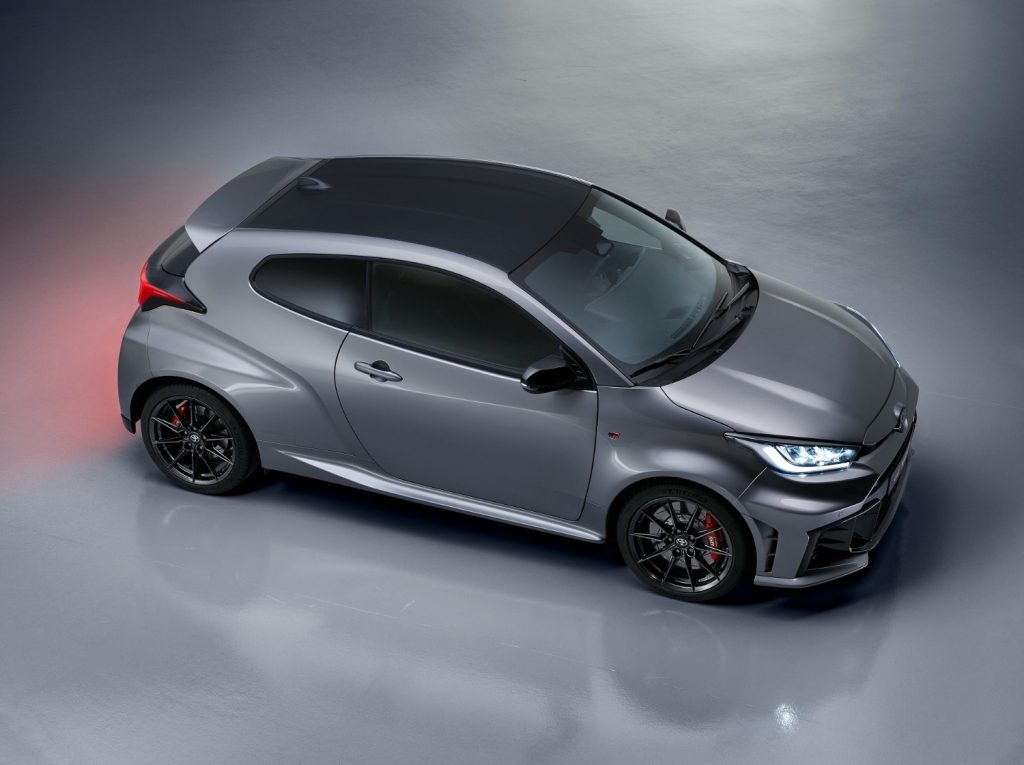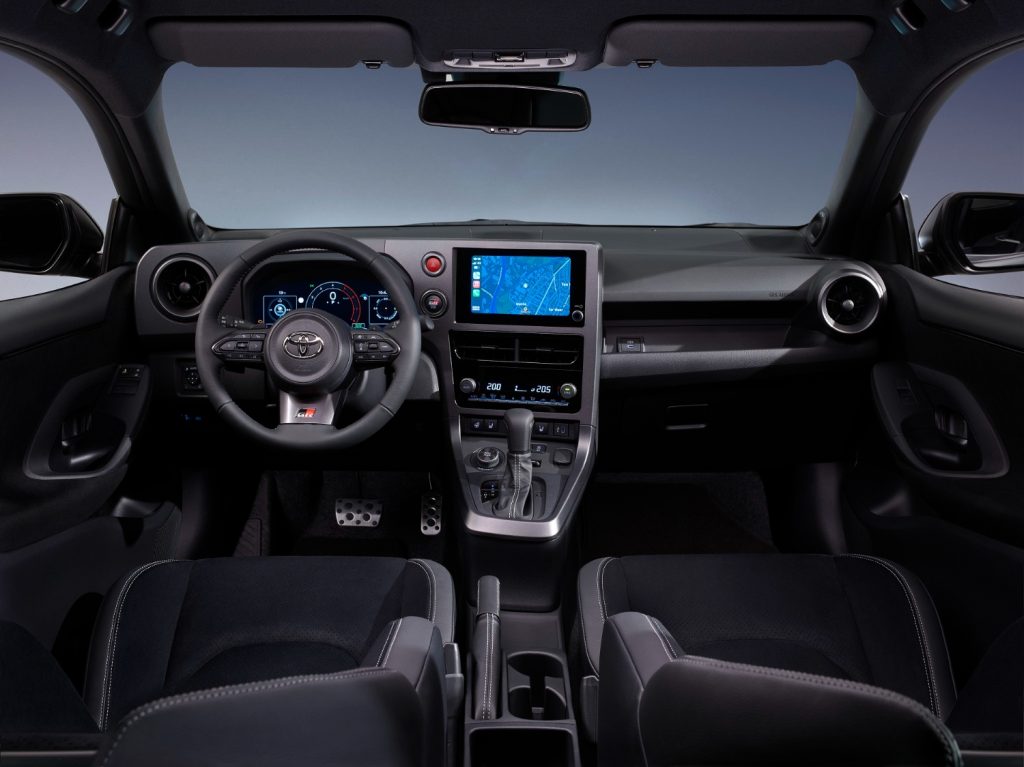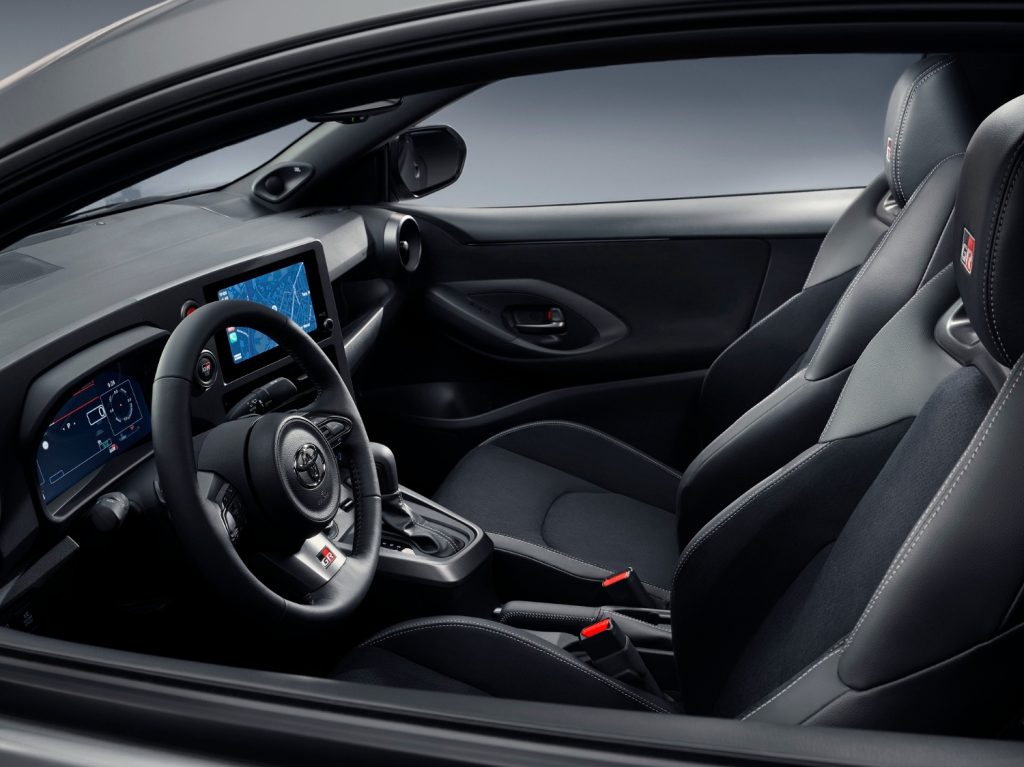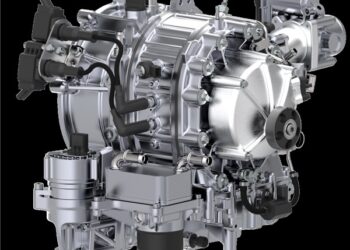The Toyota has just presented at the Tokyo Motor Show the renewed GR Yaris, which is expected to hit the market in early summer, with more power and an automatic gearbox.
The engineers at GAZOO Racing have decided to improve the turbocharged 1.6-liter, three-cylinder engine that powers the GR Yaris sports car, which now has an additional 19 hp of power, 280 hp available at 6500 rpm, and an additional 30 Nm of maximum torque, that is, 390 Nm at 3250 rpm. This increase in power is due to a new engine tuning, a reinforced valve system, a new material for the exhaust valve, an increase in fuel injection pressure D-4ST, as well as new lightweight pistons with wear-resistant rings and a new intake pressure sensor.

To handle the increase in power, Toyota has equipped its “pocket rocket” with a stiffer body, resulting from an increase of about 13% in spot welds and the application of approximately 24% more structural adhesive. As a result, Toyota reveals that the GR Yaris’ response to changes in direction, steering feedback, and grip sensation have been improved.
The renewed GR Yaris will be available in only one version that includes a cooling performance package. This package equips the Toyota sports car with a new sub-radiator to improve reliability during aggressive driving, modifications to the air intake, and an intercooler spray.




Another novelty introduced in the GR Yaris is an eight-speed automatic transmission with torque converter, from ZF. This new transmission, called the Direct Automatic Transmission, has been optimized for faster shifts and has a specific tuning for track use, according to Toyota. Thus, in an acceleration from 0 to 100 km/h with launch control, the GR Yaris with this gearbox can be 0.3 seconds faster than the GR Yaris with a manual gearbox.
In addition, the optimized software of the new transmission is also tuned to detect how the driver uses the brakes and accelerator. By doing so, it anticipates when a gear change is needed.
In the interior, significant changes have been made to the cockpit, which now has a more sporty look with some buttons and controls that have been repositioned for easier access.


In addition, the driver’s field of vision has been improved through various changes, such as lowering the upper edge of the instrument panel by 50 mm, changing the position of the rearview mirror and the tilt of the control panel by 15 degrees to be closer to the driver.
It is also worth noting that the driver’s seat has been lowered by 25 mm and the steering wheel has been adjusted accordingly, and there is also a new 12.3” instrument panel.

On the exterior, Toyota has made some aesthetic changes, including a more muscular front bumper, as well as a new steel mesh for the lower grille. In addition, the side grille has a larger opening.
At the rear, the fog lights and reverse lights have been relocated from the lower bumper to be integrated into the LED taillight assembly.










